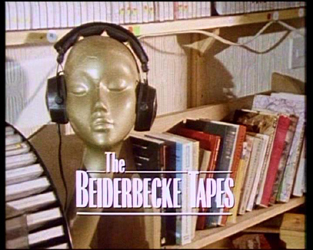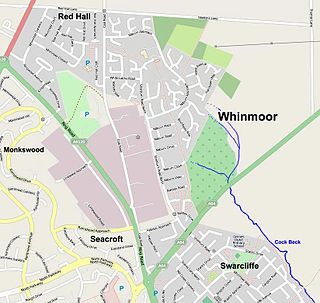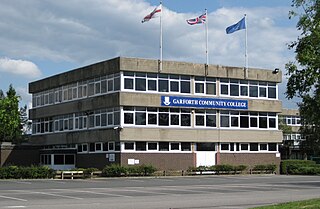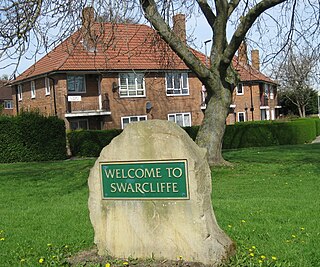Colin Burgon is a British Labour Party politician who was the Member of Parliament (MP) for Elmet from 1997 to 2010.

The Beiderbecke Affair is a television series produced in the United Kingdom by ITV during 1985, written by the prolific Alan Plater, whose lengthy credits in British television since the 1960s included the four-part mini series Get Lost! for ITV in 1981. The Beiderbecke Affair has a similar style to Get Lost!, wherein Neville Keaton and Judy Threadgold played in an ensemble cast. Although The Beiderbecke Affair was intended as a sequel to Get Lost!, Alun Armstrong proved to be unavailable and the premise was reworked. It is the first part of The Beiderbecke Trilogy, with the two sequel series being The Beiderbecke Tapes (1987) and The Beiderbecke Connection (1988).

The Beiderbecke Tapes is a two-part British television drama serial written by Alan Plater and broadcast in 1987. It is the second serial in The Beiderbecke Trilogy and stars James Bolam and Barbara Flynn as schoolteachers Trevor Chaplin and Jill Swinburne.When a tape recording of a conversation about nuclear waste inadvertently falls into Trevor's hands, Trevor and Jill find themselves being pursued by national security agents.

The Beiderbecke Connection is a four-part British television serial written by Alan Plater and broadcast in 1988. It is the third and final part of The Beiderbecke Trilogy and stars James Bolam and Barbara Flynn as schoolteachers Trevor Chaplin and Jill Swinburne. Now with a baby in tow, Jill and Trevor are asked by Big Al to look after a refugee called "Ivan".

Seacroft is an outer-city suburb/township consisting mainly of council estate housing covering an extensive area of east Leeds, West Yorkshire, England. It lies in the LS14 Leeds postcode area, around 4 miles (6.4 km) east of Leeds city centre.

Gipton is a suburb of east Leeds, West Yorkshire, England, between the A58 to the north and the A64 to the south.

Whinmoor is a residential area of east Leeds, West Yorkshire, England.

Garforth is a town in the metropolitan borough of the City of Leeds, West Yorkshire, England.

Burley is an inner city area of Leeds, West Yorkshire, England, 1 mile (1.6 km) north-west of Leeds city centre, between the A65 Kirkstall Road at the south and Headingley at the north, in the Kirkstall ward.

Garforth Academy is a secondary school and sixth form for pupils aged 11–18 and is located on Lidgett Lane (B6137) in Garforth, West Yorkshire, England.

Temple Moor High School is a coeducational secondary school and sixth form located in Leeds, West Yorkshire, England. In recent years, it has received 'Science College' status. In 2017 an Ofsted inspection gave the school a Good rating.

Moor Grange County Secondary School was an all-boys school located in the Leeds postal district of Leeds 16 at the junction of Parkstone Avenue and the West Park section of the Leeds Outer Ring Road. Although it was named Moor Grange, it was actually located in the Ireland Wood area with Moor Grange Estate being located just across the ring road. The school had a main section four storeys high. The science block was located on the top of a two-storey building above the woodwork, metalwork, science and art rooms. It also had a set of annexes used as classrooms adjacent to the playground. The school was renamed Moor Grange High School in the 1970s. It was demolished in the late 1980s and is now the site of Her Majesty's Revenue and Customs house and a new road named Redvers Close.

Swarcliffe, originally the Swarcliffe Estate, is a district of Leeds, West Yorkshire, England. It is 4.9 miles (8 km) east of Leeds city centre, and within the LS14 and LS15 Leeds postcode area. The district falls within the Cross Gates and Whinmoor ward of the Leeds Metropolitan Council.

Mount Saint Mary's School is a Roman Catholic secondary school in Leeds, England.
David John Davies was a Welsh rugby union, and professional rugby league footballer who played in the 1960s. He played representative level rugby union (RU) for Wales, and at club level for Neath RFC, as a flanker, and club level rugby league (RL) for Leeds and Dewsbury.

Cardinal Heenan Catholic High School is a comprehensive school located in Meanwood, Leeds, West Yorkshire, England.

East Leeds Family Learning Centre was a large Adult Education Centre in Seacroft, Leeds, England. The buildings were originally used as a secondary school, Foxwood School. The school is notable for its use for filming The Beiderbecke Trilogy between 1984 and 1988. Demolition of the buildings began in December 2009 and was completed early in 2010.
Stephen Pitchford is an English former professional rugby league footballer who played in the 1970s and 1980s. He played at representative level for Great Britain, and at club level for Leeds and Bramley as a prop.
Geoffrey Wraith was an English professional rugby league footballer who played in the 1960s, 1970s and 1980s, and coached in the 1980s. He played at representative level for Yorkshire, and at club level for Hunslet Juniors, Wakefield Trinity, Norths Devils and Castleford, as a left-footed toe-end style goal-kicking fullback or centre, and coached at club level for Castleford and Wakefield Trinity.

Joshua Jordan-Roberts is an English professional rugby league footballer who plays as a second-row and loose forward for the Hunslet RLFC in RFL League 1.




















